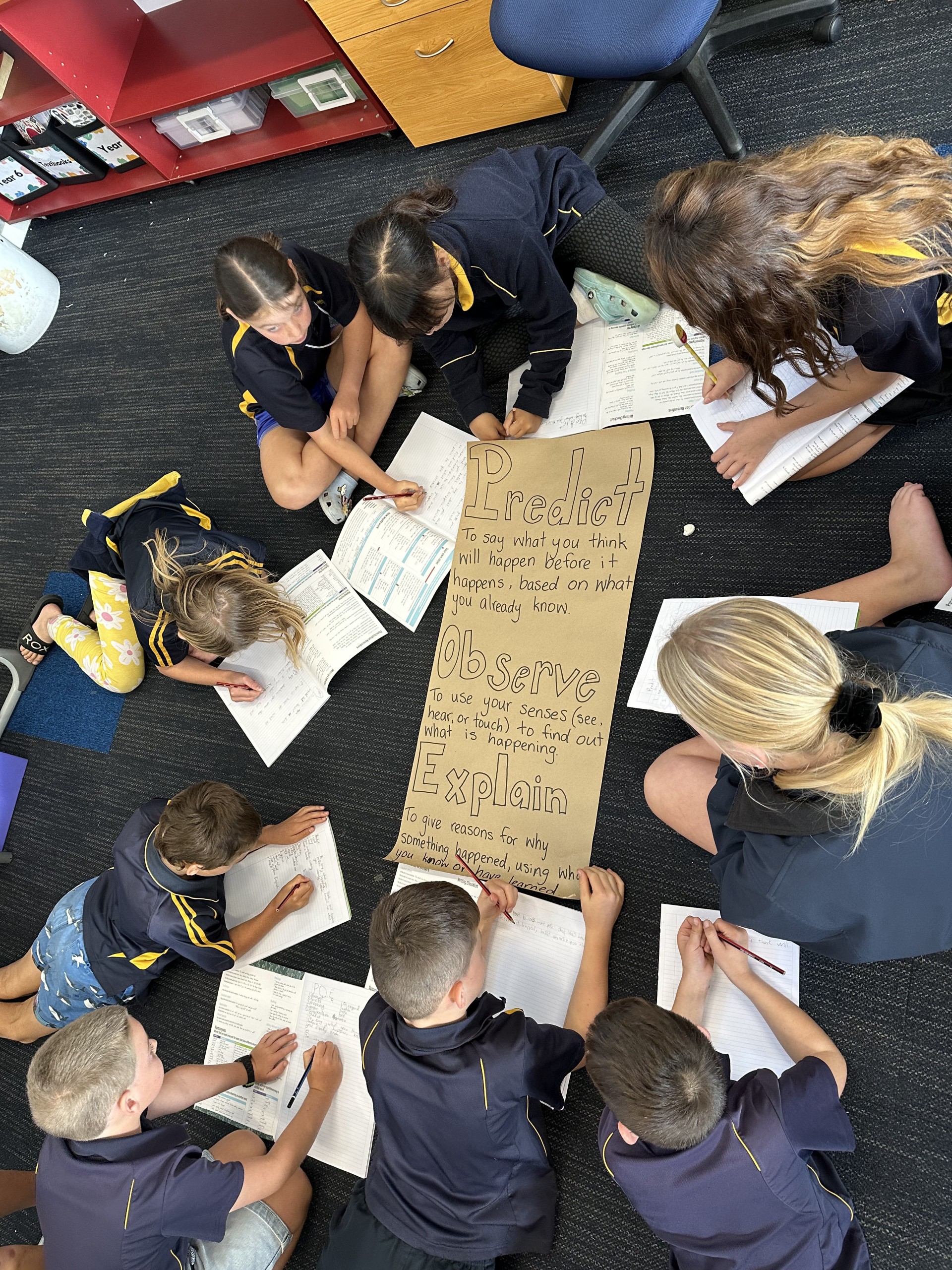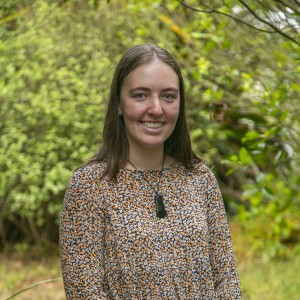‘What is an explanation?’ Mason and Tomas had different ideas. “It’s like giving steps for baking something,” said Mason, while Tomas said, “It’s when you explain your ideas to someone else so they understand.” These initial thoughts helped us begin to understand the purpose of explanation writing.
To support both the science and the writing, students followed the POE process - Predict, Observe, Explain. Students made predictions about what might happen, wrote down their observations during the experiment, and then worked on developing a clear explanation of the science behind what they saw.
In the Magic Milk experiment, Ella predicted the colours would “just mix slowly,” but after adding dishwashing liquid, she observed a sudden reaction. She explained it by saying, “the soap breaks the surface tension of the milk, which pushes the colours away.”
In the Bouncy Egg experiment, Carter and Jackson identified and used keywords like calcium, vinegar, reaction, and membrane to explain why the shell dissolved and the egg became rubbery. Using precise vocabulary supported them to write explanations that went beyond just what they saw.
Some students found it challenging to shift from writing a procedure or recount to an explanation. “At first I just wrote the steps again,” said Bowie. “But then I had to explain why things happened, not just what I did.”
Building upon this thinking, Leela chose to write the Bouncy Egg experiment with greater detail. She organised her explanation using clear headings to guide the reader. Her headings were ‘Setting Up the Experiment’ and ‘What Happens Overnight?’ Under each section, she explained not only what she did, but why the changes occurred.
By focusing on layout, purpose, and audience, Room 3 showed a growing understanding of how explanation texts work. They learned that a strong explanation not only tells what happened, helps the reader understand why it happened, using structure, scientific vocabulary, and clear reasoning.




Comments
No one has commented on this post yet.